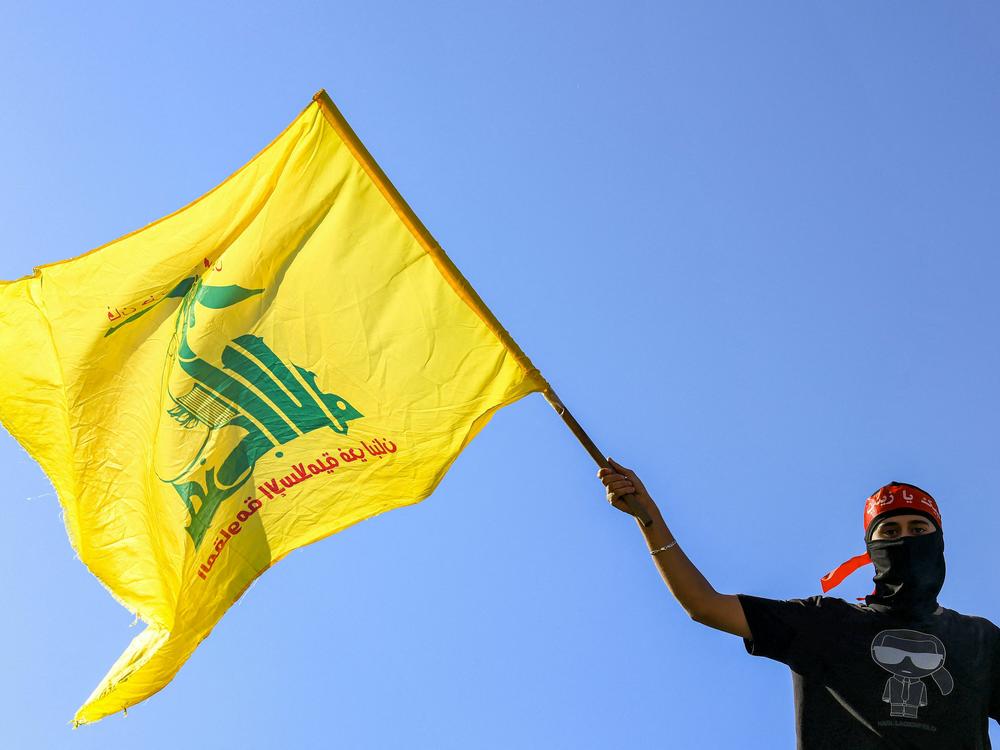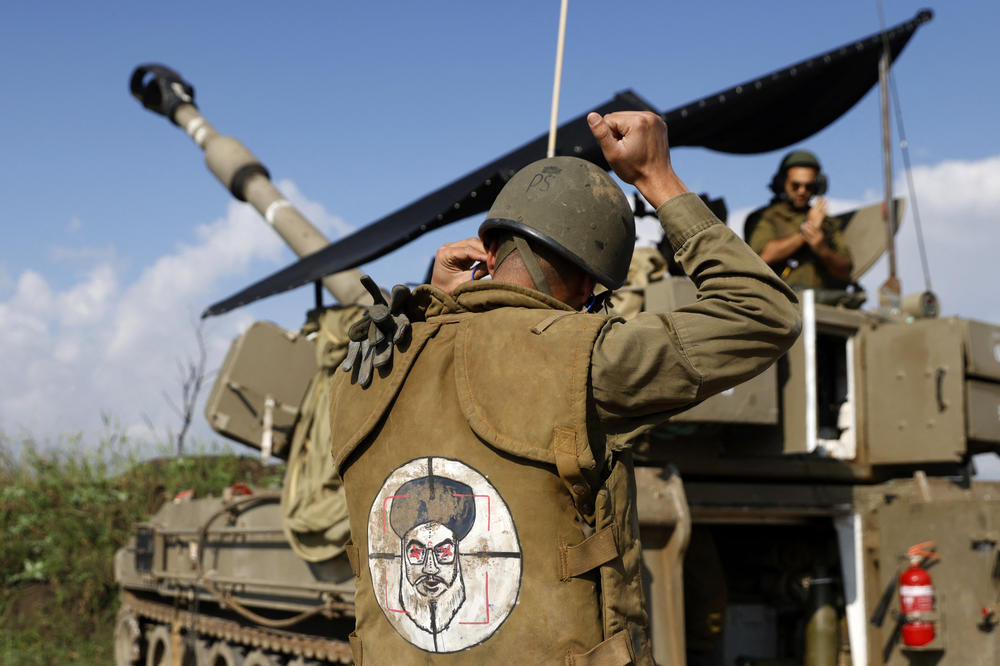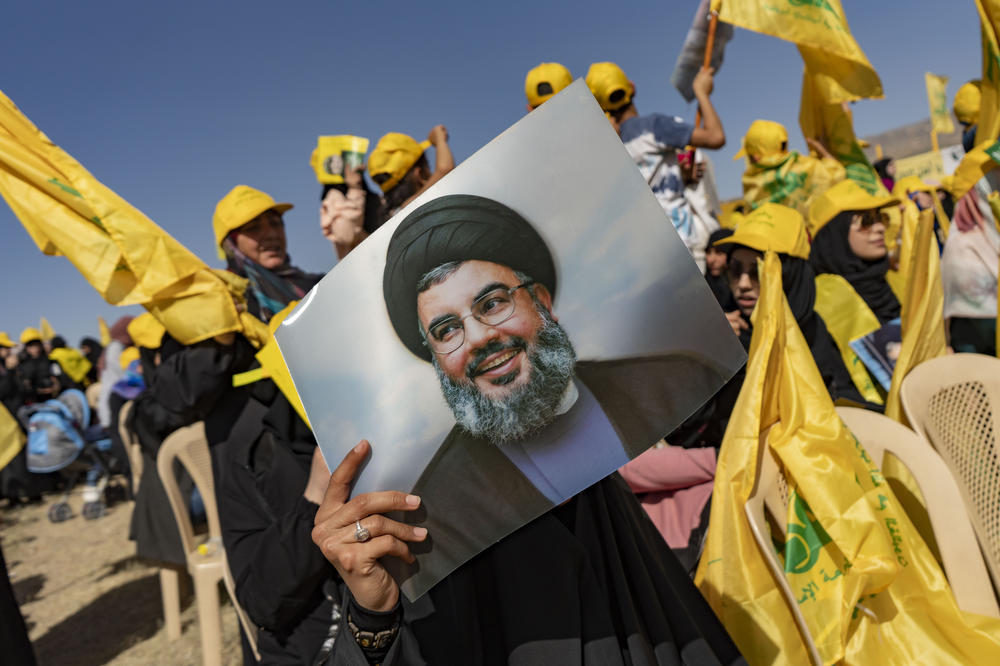Section Branding
Header Content
What is Hezbollah and why did Israel launch an airstrike into Beirut?
Primary Content
An Israeli airstrike targeting a top commander of the Lebanese militant group Hezbollah rocked a neighborhood in Beirut on Tuesday.
Israel says it carried out the “targeted strike” in response to a rocket attack that killed 12 young people in the Israeli-controlled Golan Heights over the weekend. Hezbollah has denied responsibility for that attack.
Israel and Hezbollah have been trading fire for months now, most of which has been concentrated in Israel’s north and Lebanon’s south. Tuesday’s attack in the Lebanese capital has stoked fears of a wider regional war.
We unpack a brief history of Hezbollah, its origins and goals, and who its elusive leader is.
Born in a civil war
Lebanon's complex and fragile democracy distributes power along religious sectarian lines. The number of seats given to any particular sect is proportional to its percentage of the population – the largest groups being Christians, Sunni Muslims and Shiite Muslims.
In 1975, boiling tensions between the sects, along with an influx of predominantly Sunni Palestinian refugees, plunged the country into a 15-year-long civil war. Amid the fighting, Israeli forces twice invaded and occupied the south of Lebanon in order to combat Palestinian guerilla groups that had been launching attacks against Israel.
With the support of Iran (the region's preeminent Shiite power), Hezbollah, which began as a small Shiite militia group during the war, emerged as the dominant force fighting against the Israeli occupation. In their efforts to expel the Israelis, the group became known for its use of extreme tactics, such as the infamous 1983 suicide bombing attack targeting U.S. and French housing barracks in Beirut, which killed some 300. The group is sometimes credited with launching the modern suicide bombing era.
In 1985, Hezbollah – which means the "Party of God" in Arabic – released a manifesto, in which it pledged allegiance to Iran's supreme leader, and called for the destruction of Israel.
After Israel's withdrawal from southern Lebanon, and the end of the civil war in 1990, Hezbollah continued to grow in power.
Hezbollah has tempered its Islamist political rhetoric, and the group updated its manifesto calling for a "true democracy" in 2009. In the years since the civil war, Hezbollah has only increased in sophistication and regional power. Today, the group is structured along two primary divisions: a military wing and a political wing.
Its political and military power today
For more than 30 years, the political wing of Hezbollah has been an influential force in Lebanese politics. The group has kept a steady presence of elected representatives in parliament, at times becoming the dominant party. Members of Hezbollah have continually held executive cabinet positions.
Though Hezbollah is a Shiite Islamist group, the party maintains alliances with individuals and groups affiliated with other sects. It also offers a wide range of social services in Lebanon, often fulfilling civic needs in areas that the state is unable to meet, such as operating schools, hospitals and agricultural services.
"For Hezbollah, their priority has always been to preserve its military role as a substate actor within the state of Lebanon," says Randa Slim, senior fellow at the Middle East Institute. "Politics has always been used as a means to maintain its independent military status."
Hezbollah has greatly increased its military capabilities in the three decades since the end of the civil war. Today, it is said to be the most well-armed and powerful non-state actor in the region, with a stockpile of hundreds of thousands of missiles as well as 100,000 fighters, it claims, though those figures are debated. It's a military power that was established in great part by Iran, which for decades has supplied Hezbollah with weapons and funding.
How Iran fits into the equation
Experts often describe Hezbollah as an extension of Iran, given the consistent supply of financial and military support the group has received across decades, and its stated allegiance to the Iranian supreme leader, Ayatollah Khomeini.
"[Iran] trained the first cadre of Hezbollah fighters. They were the ones who helped put its organization and infrastructure together. They were the ones who provided it with weapons and financial support for a long time and still provide some," said Slim, explaining that when it comes to issues of regional politics, Hezbollah's actions are largely made in consultation with Iran, especially on matters relating to Israel, the U.S., or other Western powers.
However, when it comes to domestic issues within Lebanon, Hezbollah is generally able to act autonomously. "Over the years, the trust level between Hezbollah and Iran has become so high that when it comes to Lebanese domestic politics, Iran really lets Hezbollah play the leading role and does not get involved in their decision-making about intra Lebanese politics."
Hezbollah's longstanding (and elusive) leader
Hezbollah's leader is the group's secretary general, Hassan Nasrallah. The Lebanese-born, Shia Muslim cleric first ascended to the top leadership position in 1992, when he was just 32.
During the 1990s, Nasrallah successfully led the group's campaign against Israel's occupation of southern Lebanon, resulting in the eventual withdrawal in 2000. Today, many continue to view him as a dominant figure in resistance to Israel and anti-Western influence in the region.
Though Nasrallah has never held a formal office in Lebanon, he is still one of the most powerful figures in Lebanese politics. He is credited with facilitating Hezbollah's evolution from militia group to an influential and effective political force in Lebanon.
Today, Nasrallah is rarely seen in public for fear of being assassinated. Still, he makes regular public speeches by video and is known as a compelling speaker.




